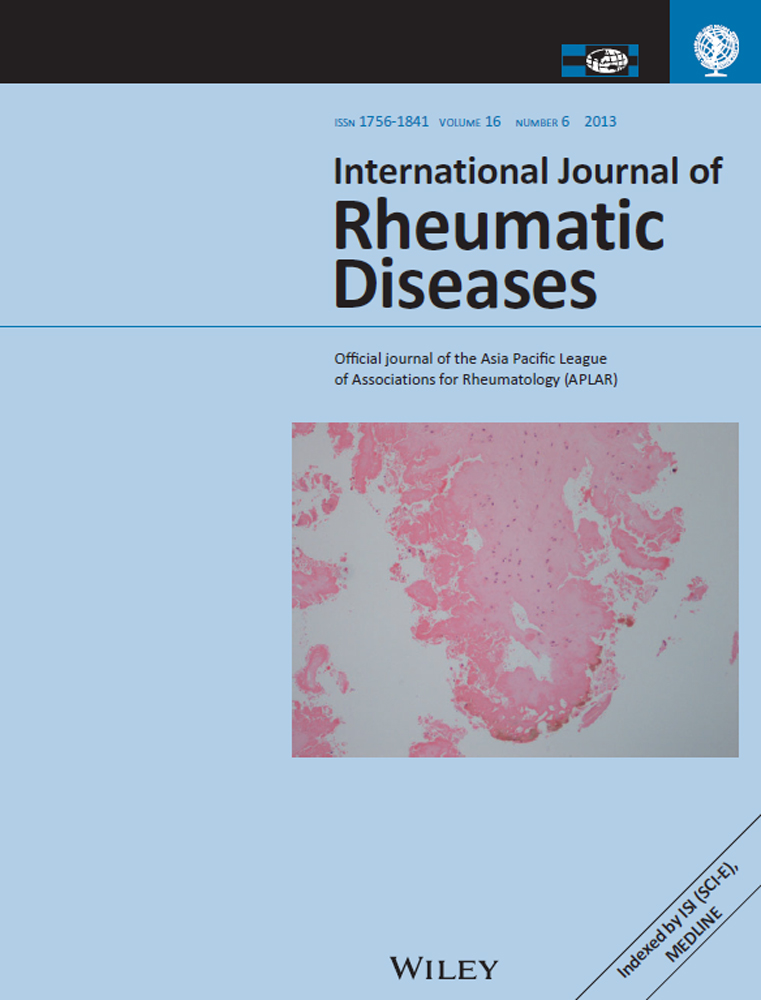Smoking and osteoarthritis
Tobacco use is a major and rapidly increasing a public health issue in many parts of the Asia-Pacific region. Over half of the world's smokers currently live in Asia and a recent review by Mackay et al.1 highlighted that the prevalence of daily cigarette use in Asia ranges between 34.8% (67.0% males, 2.7% females) in Indonesia to 11.1% (19.9% males, 3.0% females) in Hong Kong.1 Osteoarthritis (OA) is a common chronic disease in many Asia-Pacific countries. For example, the prevalence of symptomatic OA has been shown to vary from 5.1% to 20.8% in China.2 Australian data suggests that 15% of the population self-report that they have arthritis, with most reporting that they have OA.3
There have been recent headlines in the general and electronic media: ‘Long-term smokers protected against osteoarthritis’,4 which were prompted by an article published by Mnatzaganian et al.5 using Australian data, and which demonstrated that being overweight and reporting physical activity increased the risk of elective total joint replacements (TJR) in a cohort of Western Australian men, but a strong inverse dose–response relationship existed between duration of smoking and TJR. This dose–response relationship did not appear to be influenced after controlling for age, co-morbidity, weight, height, physical exercise, education or area-level socioeconomic status. However, the majority of TJRs in this study were undertaken in the private hospital setting (78.5%). Those treated in the public system were more likely to be socioeconomically disadvantaged and smoked more years,5 and therefore more likely to have waited longer for the surgery.
The authors did highlight that the study reinforced the risk of premature death associated with smoking, and any beneficial effects of smoking were outweighed by many other health risks.4, 5 However, headlines such as this can disrupt tobacco control messages that are provided by public health organizations and government health departments to reduce the prevalence of smoking in the community.
Hui et al.6 recently undertook a meta-analysis to determine whether smoking was protective for OA. In total, 48 studies were examined. While an overall negative association existed between OA and smoking, on subgroup analysis, this only remained for case–control studies, not in cross-sectional or cohort studies, underscoring the heterogeneous nature of the studies used included within the meta-analysis. When analyzed further, this negative association did not occur in the community setting, only in those recruited from a hospital setting, suggesting selection bias within these studies. In this case, meta-regression identified that smoking as a secondary exposure and the hospital setting (in which control subjects have smoking-related conditions) were the factors primarily associated with this negative association. Therefore, the authors concluded that any protective effect of smoking in OA was likely to be false.6 A further meta-analysis by Pearce et al.7 determined that the evidence for a protective effect of smoking on OA was not compelling. Subgroup analyses demonstrated some negative associations but these were negligible.7
Additionally, a dose response relationship between smoking and OA was not observed. However, it is known that body weight is a major risk factor for OA,8 and Hui et al.6 suggested that body weight may also confound a negative association identified between OA and smoking.
The loss of cartilage of the knee has also been shown to be associated with smoking, particularly among those with a family history of OA. Cartilage loss and defects are important aspects of OA and are related to severity,9, 10 thus limiting these factors may reduce severity and the possibility of TJR.
The headline mentioned used TJR as a surrogate measure for the presence of OA. However, the interaction between OA and the provision of TJR is much more complex. In many countries, the number of elective total joint replacements are increasing; in China the increase is by approximately 15% annually, with the majority of replacements performed for OA.11 However, smoking increases the risk of short-term post-operative complications with current smokers more likely to have infections at the site of surgery, 1 year mortality, stroke or pneumonia compared to non-smokers.12
In Australia, data from the Australian Orthopaedic Association National Joint Replacement Registry show that the majority (over 60%) of TJR are performed in private hospitals.13 This requires patients to have access to private health insurance, so despite having universal healthcare in Australia, there is likely to be inequity in TJR provision. Generally those of higher socioeconomic status, have access to private hospital care with negligible waiting times. These are also patients with lower smoking levels and co-morbidities and thus are better surgical candidates. There are also issues that exist in countries such as China. First, there is a great variation between rural and urban areas in the proportion of people who receive TJR. Those in under-resourced areas are unlikely to receive TJR. There are an insufficient number of surgeons to perform the surgery and rural areas also have a short supply of surgical facilities, thus many patients may fail to receive appropriate treatment. Other issues include length of hospital stay and prosthesis size which may not be appropriate for the Chinese population.11 It is not hard to envisage that these issues are likely to occur in other Asia-Pacific countries.
The interaction between smoking duration and provision of elective joint replacement is a complex relationship between OA severity, socioeconomic status, health literacy, the willingness to undergo surgery, the provider's perception of surgical risk and the health system's capacity to provide it in an appropriate and timely manner.
By suggesting that smoking is protective for OA, a disservice may be done in terms of OA treatment and general health. Asia is a significant target for large tobacco companies and tobacco control is a major issue.1 OA already contributes a significant burden on society and the healthcare system. The provision of mixed messages to the population is likely to negatively impact further on healthcare burdens and OA costs. A greater emphasis on access to services, education, improving health literacy and research is warranted in the musculoskeletal area in order to reduce the health burden and improve quality of care.




